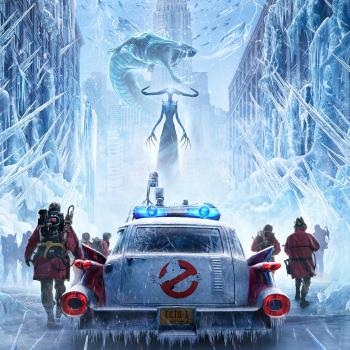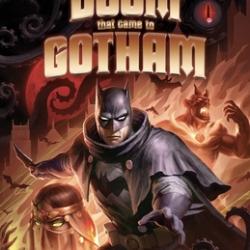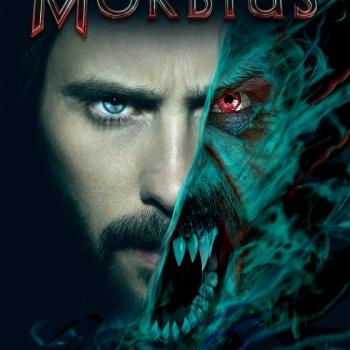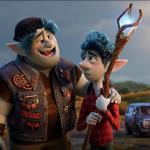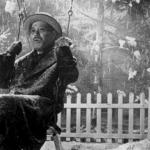Review of Saving Mr. Banks, directed by John Lee Hancock, and Mary Poppins, Directed by Robert Stevenson
When I was a kid we owned the laserdisc of Mary Poppins (1964) and we would watch and rewatch our favorite tunes again and again. The songs are catchy, Dick van Dyke’s energy is infectious, and the movie has just the right amount of magic and whimsy to hold a kid’s attention. But I always got bored and slightly frightened near the end.
Rewatching the movie again recently with my kids, I noticed, first, that the movie is two-and-a-half hours long, which my kids wouldn’t sit through; that some of the tunes hold up well (“Chim chim-in-ey” and “Spoonful of Sugar,”) and some do not (“I love to laugh”); and that, as an adult, the ending now held the most interest for me.
The movie, which won Best Picture and a bunch of other Oscars in 1964, is the musical story of the Banks family: Mr. Banks, a stern but loving father (and banker) who has too little time for his family; Mrs. Banks, a social butterfly and suffragette; and the two children, Jane and Michael, who are rowdy and uncontrollable for a succession of nannies who quit in frustration.
Enter Mary Poppins, the magical, no-nonsense nanny. At first it seems that Poppins and her street-entertainer friend, Burt, are there to replace the parents. But in the end it emerges that Poppins is there to put the family back together. Her magic, it turns out, is mainly there to save Mr. Banks, who learns to put family first. This happens during a finale that bored me as a kid but got me weepy now that I’m a father myself. The movie is about learning how to be a dad.
II.
Sixty years later, Disney has made a movie that isn’t really about the making of Mary Poppins, nor is it a romantic comedy about Walt Disney and author P.L. Travers, which is what the commercials make it seem. Rather, it is a bittersweet movie about fathers and daughters and how to love an imperfect dad. It just so happens that the daughter in question grows up to become the author of the Mary Poppins books, and her father (so the movie claims) is the model for Mr. Banks.
Saving Mr. Banks tells two stories. Half of the movie (the part highlighted in the commercials) takes place in 1961 and features Walt Disney (Tom Hanks) wrestling with P.L. Travers (Emma Thompson) to craft the movie that became Mary Poppins. Travers was an eccentric, proud, difficult woman, and this part of the movie is painfully, awkwardly hilarious. Thompson steals the show with her deadpan misanthropy and should easily be up for some big awards.
The filmmakers show some self-awareness about Disney by giving Travers scathing dialogue about how Disney sugarcoats everything and hides the hard truths about life. I’m not the biggest fan of the Mouse House, but I was surprised to hear the most damning indictment of Disney expressed by a character in a Disney film.
The other half of the movie—and it really is almost half—takes place in turn-of-the-century Australia and recounts Travers’ upbringing and her relationship with her father (played by Colin Farrell). Her father, it turns out, was a dreamer and a doting father, but an unsuccessful banker afflicted with an unspecified terminal disease who turned to drink to dull the pain.
The tie between these two stories are the father figures: Travers’ father and Mr. Banks. Fathers, the movie rightly says, leave a permanent imprint on their children and their view of life. The making of the movie brings up Travers’ memories of her father. She loves him, is disappointed by him, and wants to stay loyal to him and defend him against the world even while she sees that he deserves some of the criticism he gets. It is clear that Travers wrote her books partly as a way of coping with and processing her childhood. The way Disney treats Mr. Banks is blurred, in her mind, with how the world treated her father.
III.
There is a moment in Mary Poppins that leapt out at me when I rewatched it recently. The children, Jane and Michael, flee from the bank and from their father. They tell Burt they’re scared of their father and that he doesn’t like them. Burt tells them Mr. Banks loves them very much, and then sings about Mr. Banks’ troubles: going to work every day, surrounded by a lifeless bank, toiling hard with no appreciation. This is a key step towards the family’s eventual reunion (and I always thought Burt was a more interesting character than Mary Poppins).
As a dad, I appreciated this scene so much. Mr. Banks isn’t the typical movie dad—neither a complete buffoon nor a villain. He’s just a dad who sometimes gets caught up in the rest of life and forgets to pay attention to his kids. The sensitivity with which Mary Poppins treats Mr. Banks elevates the film and makes it a real classic.
Saving Mr. Banks replays those very scenes and shows them to be the product of Travers’ frustrations with Disney. Travers initially despises what Disney is trying to do with her characters, especially Mr. Banks. Travers’ love for her own father compels her to fight back in defense of Mr. Banks, her father’s literary embodiment, and force Disney to make a more sensitive, complex, mature film. The scenes of the young Travers with her father, and the adult Travers’ catharsis, are played just right: they tug your heart-strings without stepping over the line into maudlin schmaltz. Saving the portrayal of Mr. Banks becomes Travers’ way of honoring her father’s legacy, a wonderful image of honoring even imperfect fathers.
I have no idea if this is true, but it makes for a wonderful story. And Disney, the corporation, is essentially admitting that the best parts of one of its best movies came against the wishes of Walt Disney himself; that Walt’s inclination to sugarcoating everything does, in fact, sometimes tell lies; and that Disney’s best comes when it leavens the levity with bit of gravitas and grit.
IV.
Disney gets the last laugh by making Saving Mr. Banks. Near the end Walt tells Travers that “we inspire people, we give hope, that’s what we storytellers do.” He doesn’t come right out and say “we invent happy endings to make people feel good,” but that’s what Disney does (see also Plato’s noble lie). Disney has now done the same thing with the story of Travers, Disney, and Mary Poppins. Some critics have complained that Disney has Disneyfied Travers and given a happy ending to a famously fractious relationship in a way that Travers herself would have hated. Again, I don’t know if that’s true or false, but it wouldn’t be out of character for Disney.
It does bring up the question of truth in storytelling. Saving Mr. Banks purports to be based on a true story, yet like all adaptations it tells a narratively convenient form of the story. All the characters are witty and beautiful, events play out in easily-digestible short scenes, emotional turning points happen at the right times, and of course everyone gets a happy ending. Film does the same thing to truth that memory does: it sanitizes and polishes to make the truth more bearable. Disney goes further than most in editing truth for narrative convenience—too far, sometimes, especially with its insistence on happy endings—but it didn’t invent the technique. All stories must be heard with a critical ear.
Mary Poppins is overlong and uneven, but is ultimately a sensitive and winsome classic. Saving Mr. Banks may or may not be history, but it is a delightful film that tells some truths about fatherhood and memory. It’s a great date movie, especially if your date is your nine-year-old daughter.



